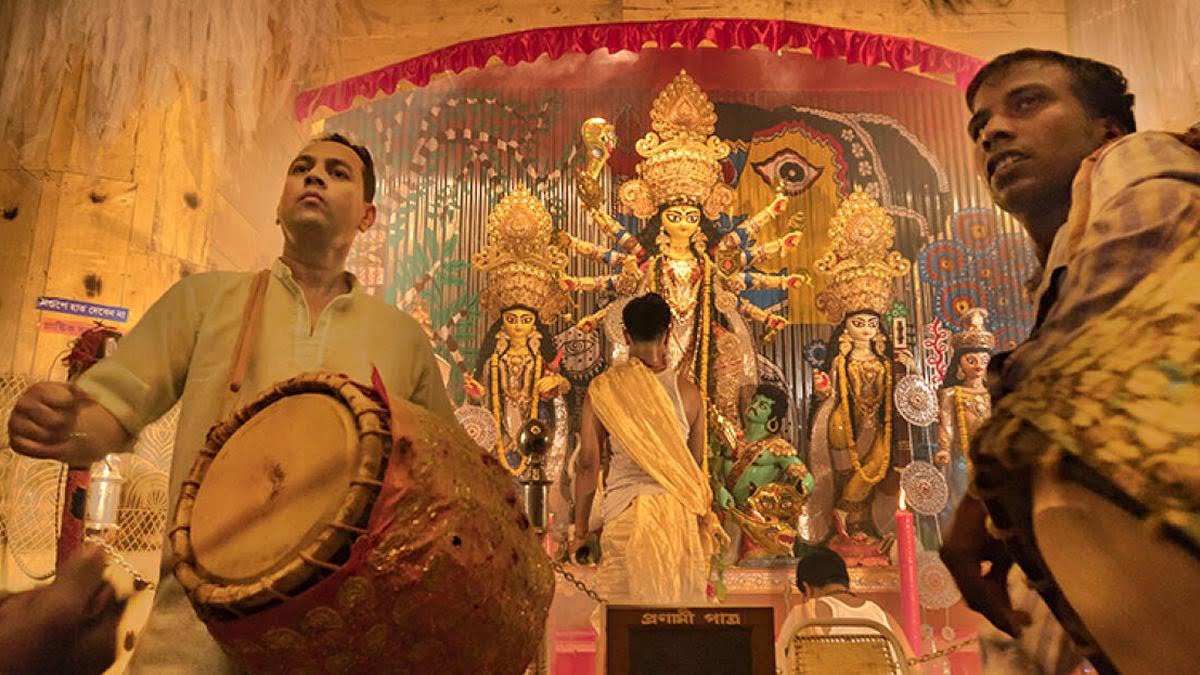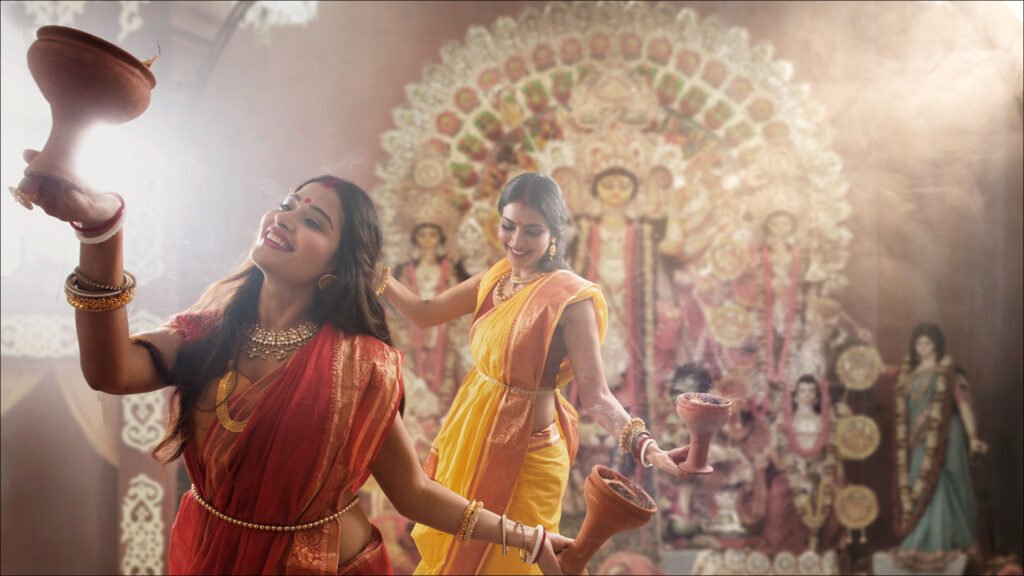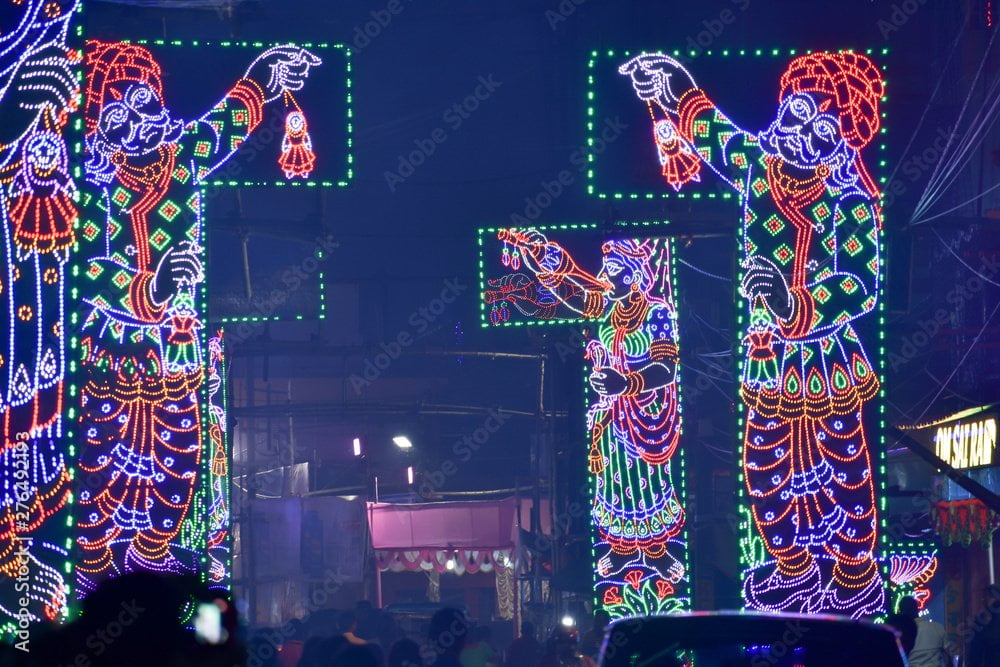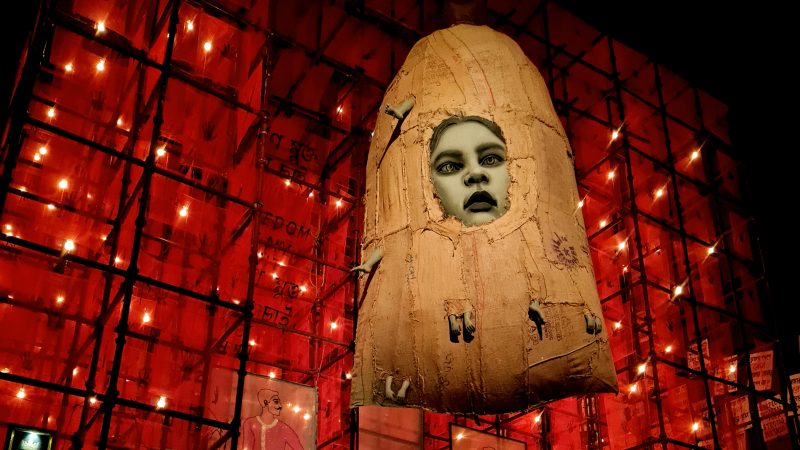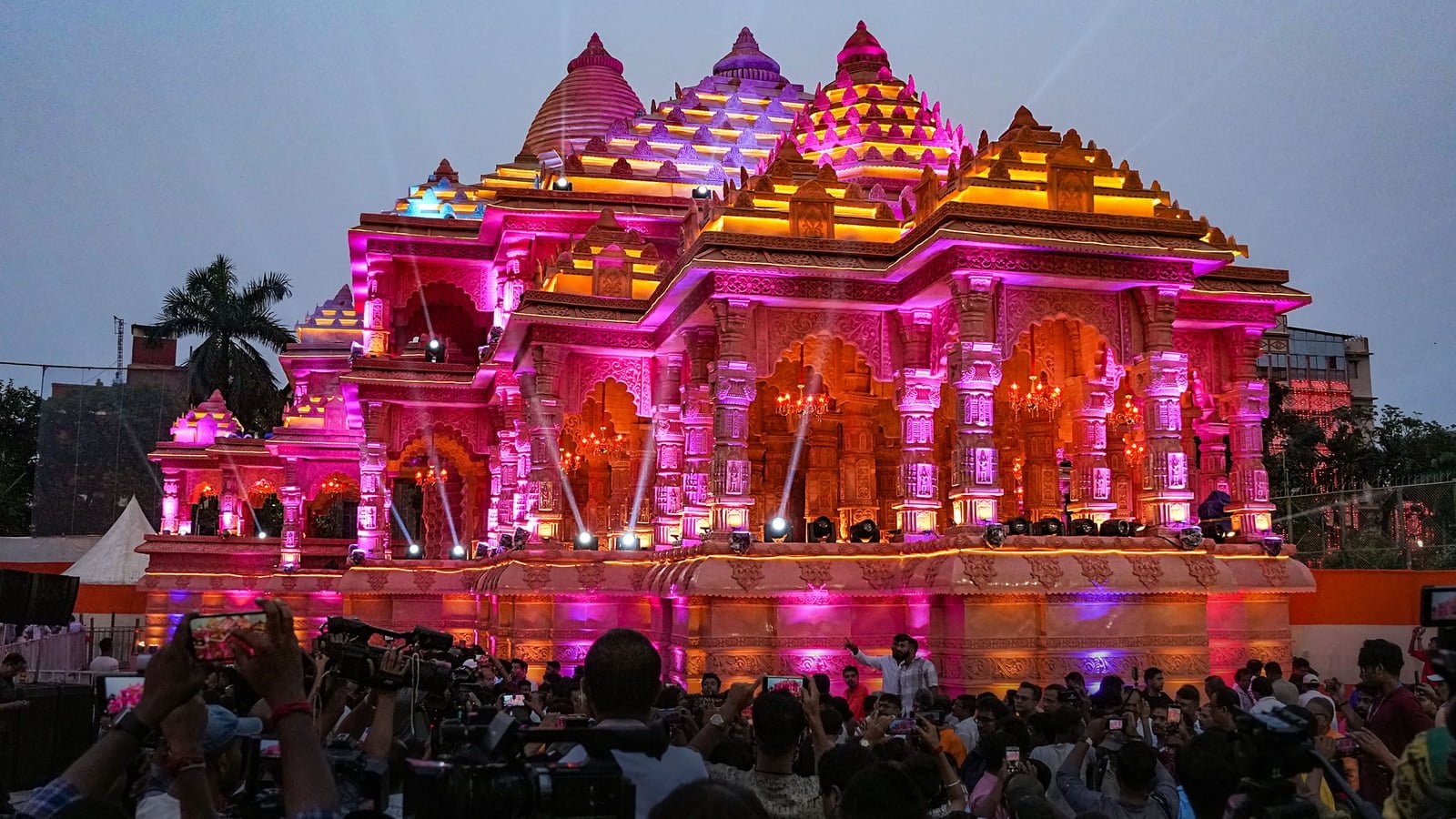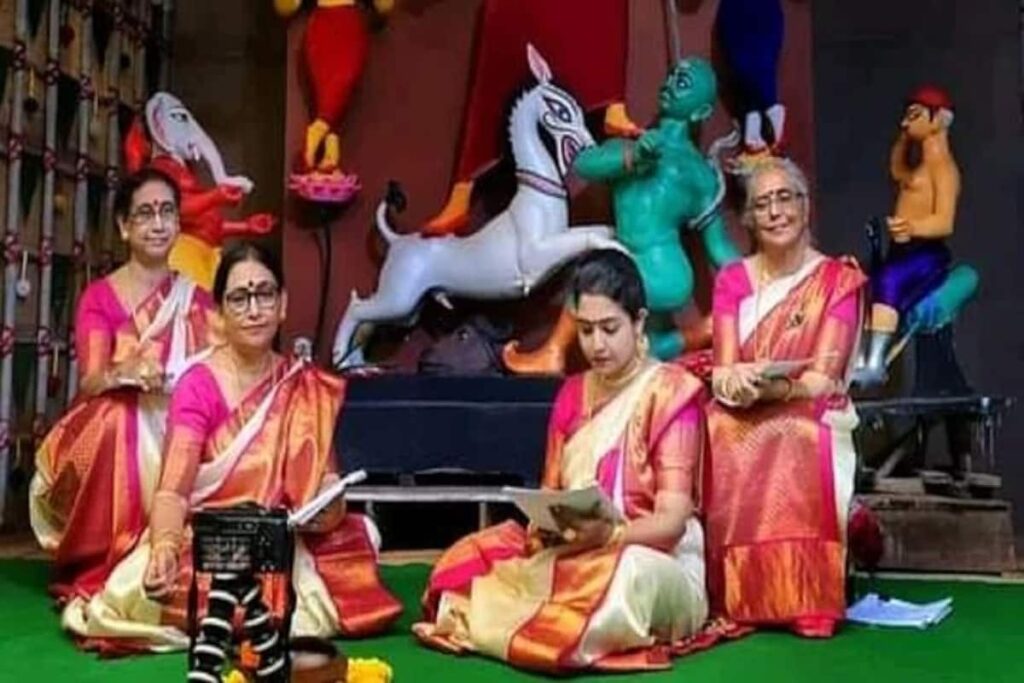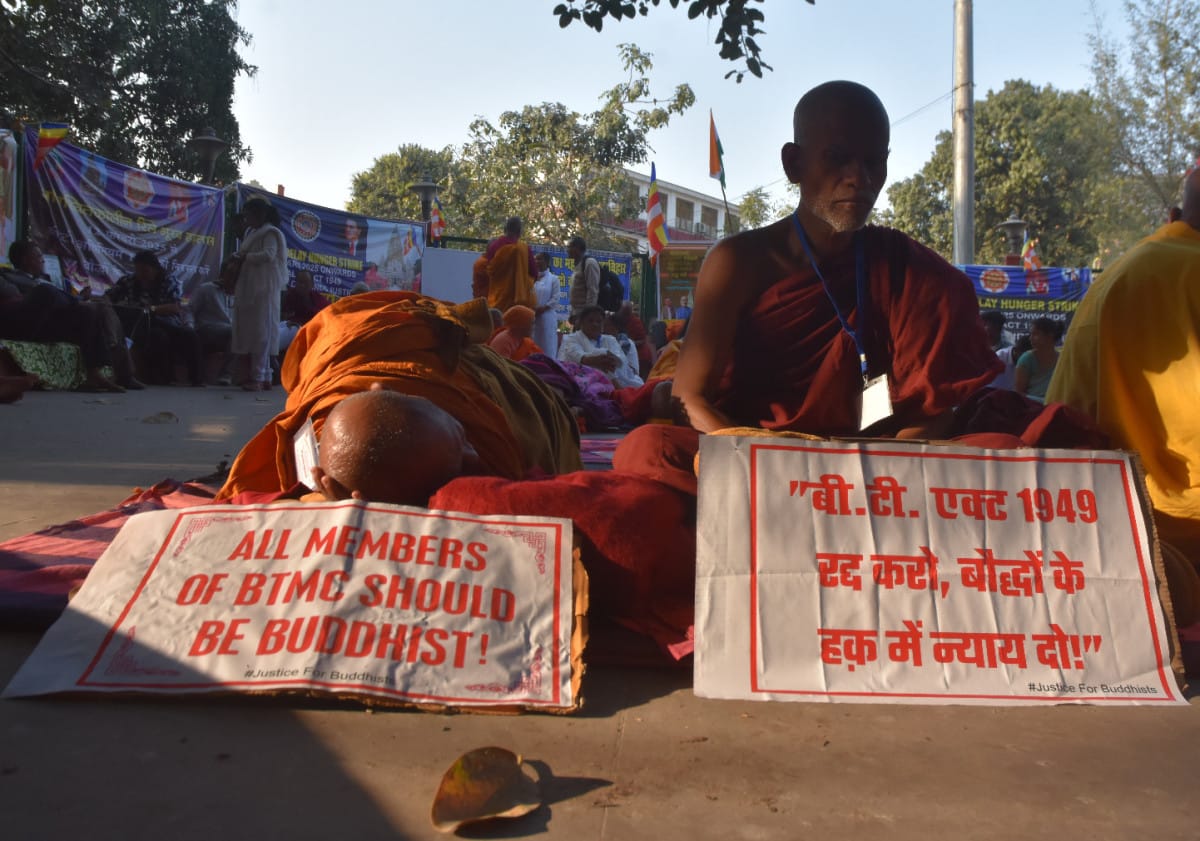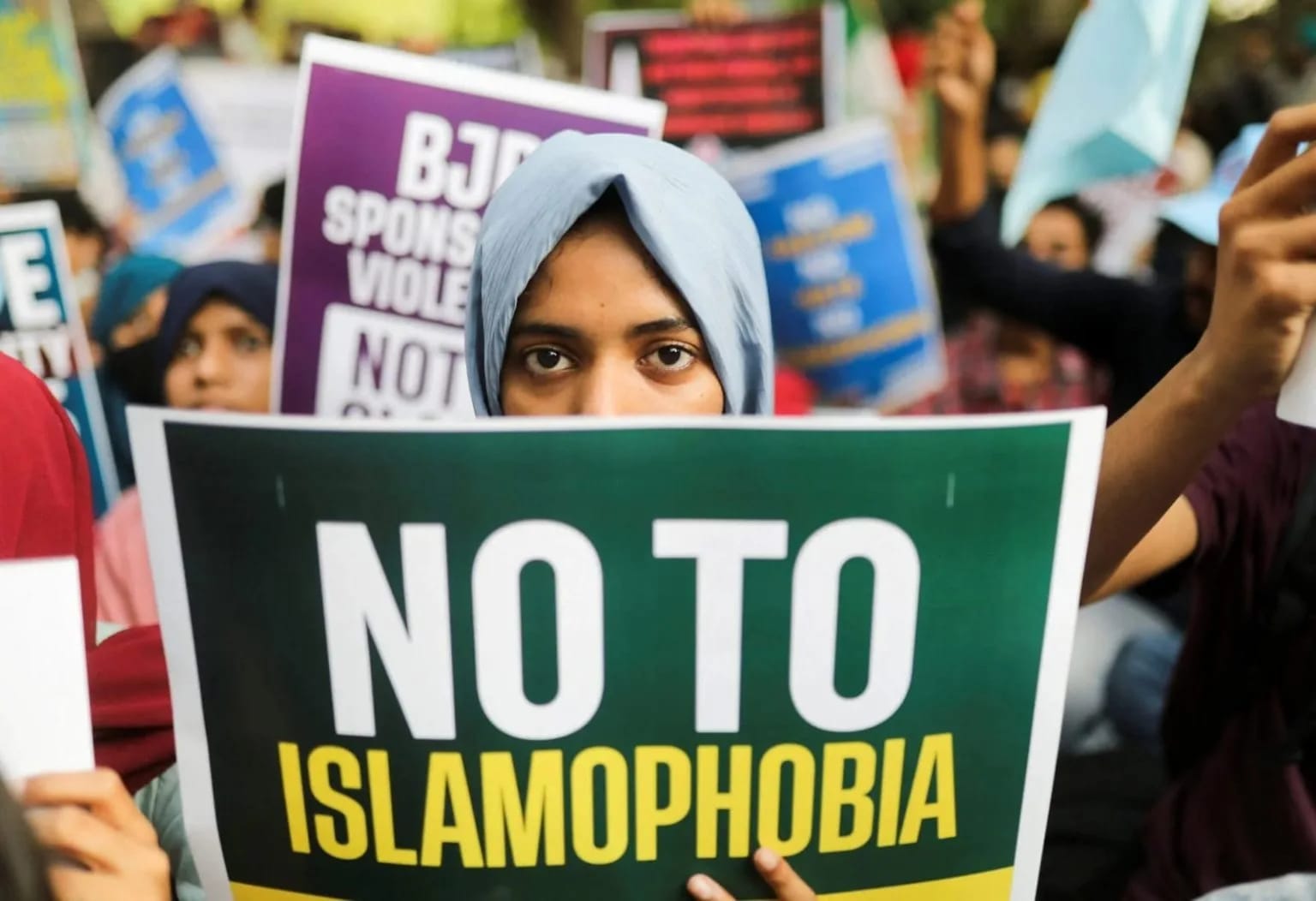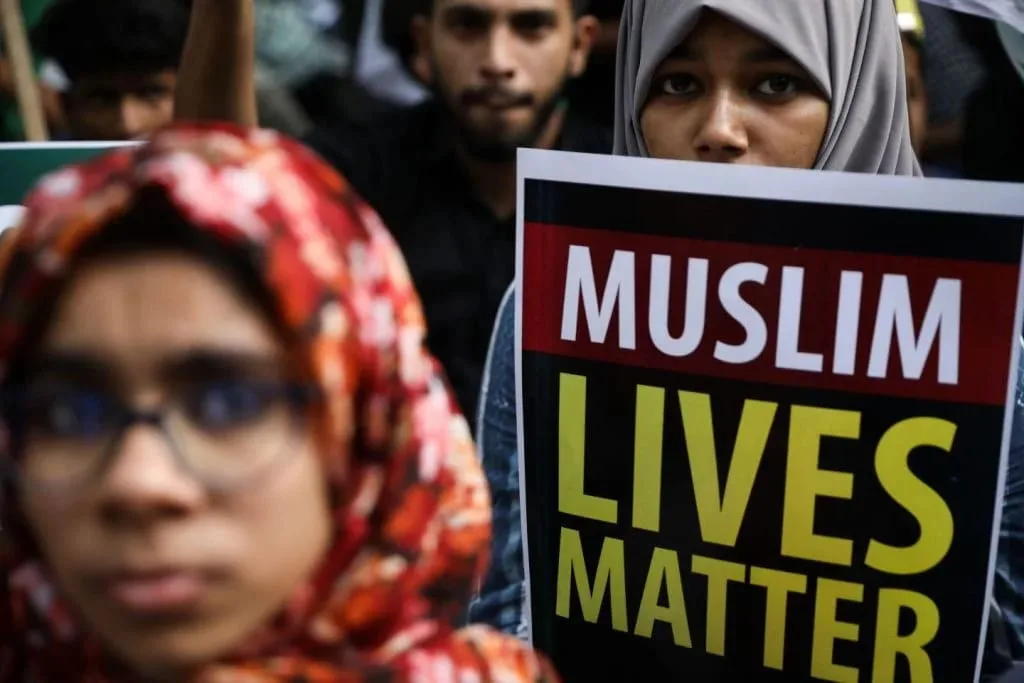For Bengalis, Durga Puja has always been a celebration of life in all its joyous, vibrant glory. It is primarily a Hindu festival that celebrates triumph of good over evil as the warrior goddess Durga kills Asura and brings back peace and harmony for humanity. However, in the Eastern part of India, especially in Bengal, the image of Durga that is worshipped is not particularly one of a warrior, rather it is of one’s beloved daughter. Durga’s other avatar, Uma, represents the daughter that is lovingly welcomed by all Bengali mothers and it is in the joy of the daughter’s arrival that Bengal busies itself in celebrating. On the first day of the goddess’ arrival, what rest of India celebrates as Navratri, Bengal wakes up to the lore of Durga’s victory over evil, related by Birendra Kishore Bhadra on the radio. Thus, marks the start of the 10 day celebration of Durga.
Even though it is a religious festival, the grand nature of its celebration has always transcended barriers of ethnic or religious divides. The city decked up in glittering lights and charming colours with huge pandals decorated with state of the art architecture and artistry, welcomes one and all, to visit and marvel at the beauty and allure of the goddess and their thematic decorations. It is customary for people of Bengal to dress themselves up in their best clothes and visit a few of these pandals with their friends, families, and loved ones at least one day of the Puja, if not all five days.
In 1757, the Maharaja of Shobhabazar Raj Bari, Kolkata,Nabakrishna Deb started Durga Puja in his palace on a grand scale. Since then, Durga Puja has been celebrated by certain elite families of Bengal. It is only from the beginning of the nineteenth century that Durga Puja came to be celebrated as a publicly organised celebration where all local people contribute to their capacity.
Since then, Durga Puja in Kolkata acquired a peculiar character of its own that still remains unmatched in any other city of India till date. Even though it is a Hindu religious festival, it transcends religious and caste discrimination through its keen demand for popular participation and its dedication towards producing a grand-scale festivity.
During these five days, the city of Kolkata does not sleep. Colourful streams of light shower the city even in its smallest nooks and corners.
During these five days, the city of Kolkata does not sleep. Colourful streams of light shower the city even in its smallest nooks and corners. The city thrives with the vivacious life and enthusiasm of Pujo and it stays up through the night, crowding the streets with people in their colourful attire even at midnight or the earliest hours of dawn .
Over the years, much of the excitement and attraction of Durga Puja has shifted to the innovative styles and architecture with which the Sarbojanin Puja, meaning the inclusive Puja organised by the local communities, are erected every year. Every year artists, architects and engineers dedicate themselves to the construction of these pandals under unique themes and artistic expressions. Oftentimes, they express concerns about social and feminist issues and ensure the throngs of pandal-hoppers visiting these pandals also do spare some thought towards certain ills that continue to plague our society.
In 2021, Durga Puja even carved its way into the UNESCO Representative List of the Intangible Cultural Heritage of Humanity and has garnered an international attraction to it, resulting in visitors from other parts of the country and foreigners coming to the city at this time.
This year, one of the popular puja committees of North Kolkata, Kashi Bose Lane stood out to many spectators through their this year’s theme, ‘Chaine Hote Uma’, meaning ‘I Do Not Want to Be Uma’.
This year, one of the popular puja committees of North Kolkata, Kashi Bose Lane stood out to many spectators through their this year’s theme, ‘Chaine Hote Uma’, meaning ‘I Do Not Want to Be Uma’. It is widely believed in mythology that Maa Durga is a powerful culmination and manifestation of women’s strength as they all collectively work together to ensure the triumph of good over evil. Thus, Maa Durga is also present in every single woman in our society. The puja committee chose this narrative to spotlight heinous crimes of human trafficking, girl-child abduction, and forced prostitution of women that often goes unnoticed by authorities in the red light districts in the city.
A puja pandal in Central Kolkata, ‘Pathuriaghata Pancher Palli’, boldly shattered all the taboos that exist around women’s menstruation. They adopted the theme of menstruation hygiene and focused on spreading awareness regarding the importance of menstruation health through their pandal decoration. It stunned the spectators but their beautiful and thought-provoking artwork also attracted many in large numbers.
In 33 Pally Club, the puja pandal decorated itself on the theme of natural disasters and how human intervention is often responsible for disastrous calamities of nature. Over the years, the course of nature has been severely disrupted due to meddling of giant corporations and authorities and the consequence of that is often paid with loss of innocent lives.
Thus, the carnival of Durga Puja does not become an antidote to forgetting our societal ills, rather it becomes an innovative method to force ourselves to think beyond ourselves and look at the world through a panoramic view of social concerns.
This is how, many pandals in Kolkata, make radical statements about socio-political issues that concern our society even today. Thus, the carnival of Durga Puja does not become an antidote to forgetting our societal ills, rather it becomes an innovative method to force ourselves to think beyond ourselves and look at the world through a panoramic view of social concerns.
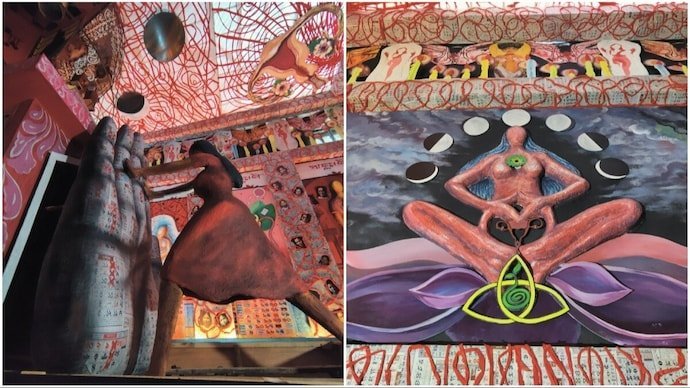
Besides social issues, these pandals also highlight lost art-style and cultural practices of rural Bengal. From ‘patachitra’ to ‘chou nach’, ‘bohurupi’ practice, and other rural Bengal textiles and handcraft- all of these are proudly highlighted in Durga Puja pandals around the city.
Naaktala Udayan Sangha, with their theme ‘Hridaypur’, loosely translated to ‘the city of hearts’, takes its spectators on a memory trip to the years following Bengal’s Partition. This was a time when Naaktala and its surrounding areas were refugee colonies. By highlighting the stories of the families who crossed the border from East Bengal, now Bangladesh, during the Partition and settled into Naaktala colony, in search of a better life, the local Pujo committee looked back at its own history.
By highlighting the stories of the families who crossed the border from East Bengal, now Bangladesh, during the Partition and settled into Naaktala colony, in search of a better life, the local Pujo committee looked back at its own history
They held up old, discarded belongings, nameplates, cupboards, hand-written letters of those people that may appear meaningless at first glance, but through a careful inspection, reveals to us the poignant history of displaced millions. This theme touched many hearts and became a mirror of memory to the local residents themselves as they found their own history staring back at them.
Haatibagan Nabin Pally Puja Committee recreated popular children’s book Abol-Tabol by Sukumar. They brought the text to life within the puja pandal by decking it into a fictional world of black-white. The pandal was populated with iconic characters and set-ups, easily recognisable by all those who grew up reading this text in school and at home. They also mixed different forms of artistic expression by hosting live performances of certain sections of the texts by professional actors within the pandal premise.
However, one might say that the secular sentiments of celebration and joy that Durga Puja was known for has been dwindling over the years, as religious sentiments become more sectarian and political. Santosh Mitra Square, one of the popular Durga Puja committees of North Kolkata, recreated an imposing image of Ayodhya’s Ram Mandir with a hefty budget and meticulous attention to details. This pandal too attracted a large crowd of curious spectators from around the city.
It has been visited by a long-line of BJP leaders, including Bengal’s governor, C.V. Ananda Bose, and the Chief Justice of the Kolkata High Court, Justice T.S. Sivagnanam. This pandal took on a political statement in the heart of the city and challenged the transcendental ethos of community and unity that Durga Puja in Kolkata has fostered and cultivated in Bengal over the years.
Partha Sarothi Ray writes in an article for The Wire, ‘Any pandal marking the subjugation and dishonour of a particular community goes against the very ethos of the festivities.’
Partha Sarothi Ray writes in an article for The Wire, ‘Any pandal marking the subjugation and dishonour of a particular community goes against the very ethos of the festivities.’
With media gushing about this pandal all over the country and having throngs of celebrities visiting it, this puja sent out a message to non-Hindu communities of Bengal that the core values of the festivities in Bengal have changed.

There are multiple Puja Committees in Bengal where people from both Hindu and Muslim communities organise their puja. Certain Muslim dominated areas of Bengal such as Metiaburj, Khidirpur often have puja committees solely consisting Muslim organisers.
Throughout the years, Durga puja in Bengal has never questioned one’s religious beliefs or faith, rather has urged one and all to participate all the same. But when the subjugation of one community is celebrated (in this case, the demolition of Babri Masjid to erect Ayodhya Temple and recreation of it in the puja pandal), then such a celebration also dictates who can participate in the festivities and to what extent.
In 2021, 61 Pally Club organised their puja on the theme “Mayer Haat e Mayer Bodhon’, meaning ‘Mothers worshipping mothers’. They broke traditional patriarchal norms by inviting women to worship Maa Durga. It was conducted by an organisation named ‘Subhamastu‘ led by Nandini, a former Sanskrit professor and stage performer. In their attempt to break away from the patriarchal mould of male supremacy in the realm of public worship, Nandini has said that their group has no hierarchy.
Since then, many other Puja Committees, such as New Town Sarbojanin, Salt Lake AG Block and few others from the city have been inviting female priests for the puja. However, this attempt to attain gender parity in the place of worship cannot be truly lauded until it addresses the oft-ignored question of caste hierarchy.
Even though the Puja pandals of Kolkata rarely see any outright instances of caste discrimination, a certain form of Brahmanical patriarchy is still celebrated when only Brahmin male purohits are invited year after year to worship the goddess. Replacing the male Brahmins with female Brahmin priests can hardly be hailed as a feminist win as it still lacks intersectionality in its approach.
Replacing the male Brahmins with female Brahmin priests can hardly be hailed as a feminist win as it still lacks intersectionality in its approach.
Yet, one can hope for a more holistic, and radical change in the cultural and carnivalistic celebration of Durga Puja in the city. Perhaps, these questions can be raised because the celebratory practices of Durga Puja allows the space for criticism and strives to meet the demand for more radical evolution in its practices.
Thus, it is no longer limited to a religious festival even though spiritual beliefs are still intact and thriving at the heart of the festival. The city of Kolkata is known for holding onto its past dearly, with heart-full of nostalgia, while the rest of the world moves swiftly to the future. It does not only celebrate the past but carves out a present from the past that can accommodate and celebrate the multiplicity and diversity of its inhabitants.
About the author(s)
Debabratee (she/they) is a student of English Literature at Jadavpur University. When they are not found reading or writing, they are found running after their pet dog and cuddling with him. They are avid binge-watcher of all kinds of OTT content and like to dissect and analyse them in their free time.
